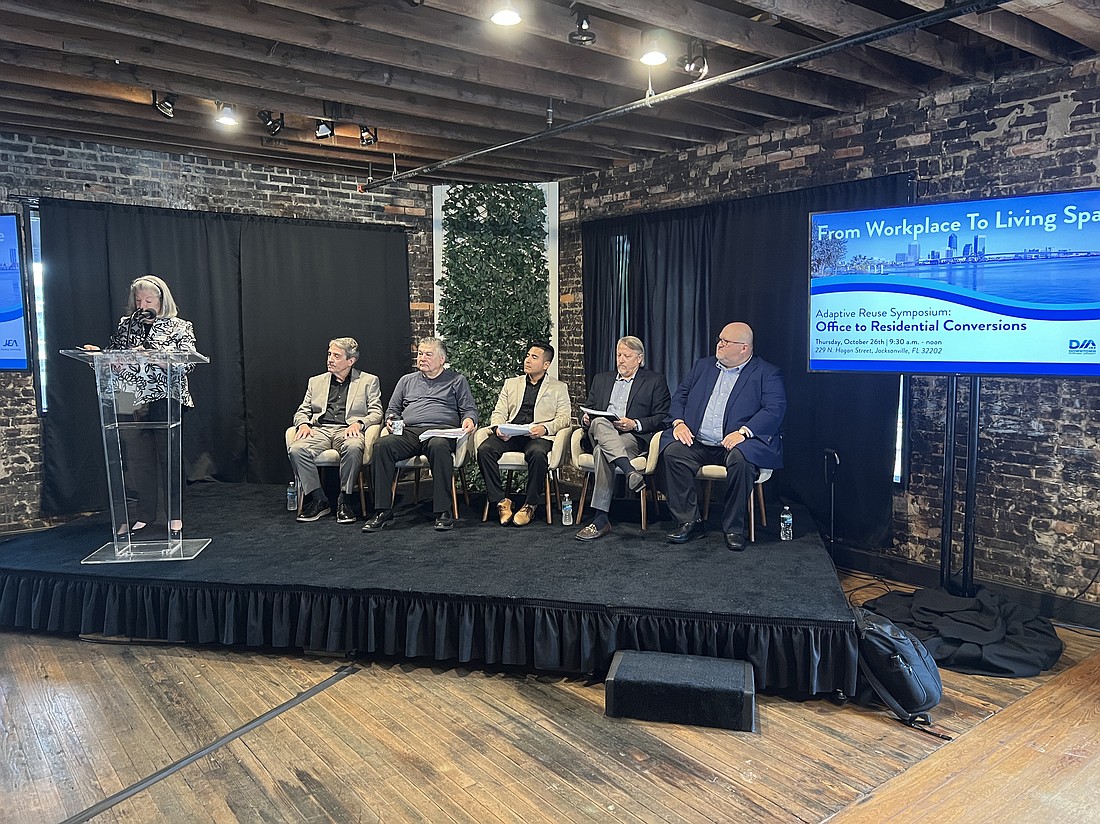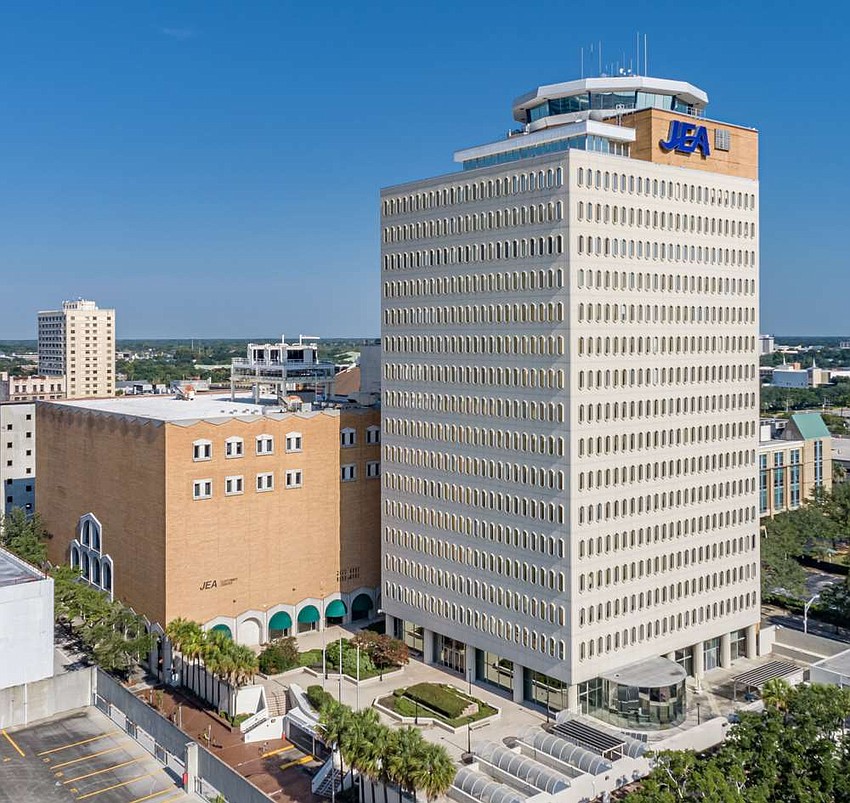
With many workers’ commutes reduced to steps from the bedroom to the home office, companies around the nation are scaling back the amount of office space they are leasing.
That’s also the case in Jacksonville, where 43% of workers are hybrid office and remote.
The Downtown Investment Authority and JEA discussed the feasibility of converting empty office buildings into residential units at a symposium Oct. 26.
The theme was advance planning.
DIA and JEA sponsored the adaptive reuse symposium called “From Workplace to Living Space” at The Lark venue at 229 N. Hogan St.
The panel comprised architects Daun St. Amand of WATG in Los Angeles; Marc Fairbrother of Perkins Eastman of Washington, D.C.; and Shawn Frost, of VIKA South of Jacksonville; and Jeffery Kinney, senior vice president of CBRE of Jacksonville, and Orlando Lagos, estimating executive at Gilbane Building Co. in Boca Raton.
The current office vacancy rate Downtown is 26.3%.
A few years ago, that rate was about 11%, said Lori Boyer, DIA chief executive officer, in her opening remarks.

Jacksonville’s population is growing at 1.3% per year, meaning 20,000 new people annually need housing. Demand exceeds supply. City leaders would like to see Downtown become a home for many newcomers.
There are more than 7,600 Downtown residents and 1,000 new Downtown units under construction, Boyer said.
“Downtown zoning regulations allow for a wide range of uses virtually anywhere. So residential, office, mixed-use retail and entertainment can all be combined in a single building or in adjacent buildings,” she said.
Unlike suburban communities, Downtown allows for parking on-site and off-site in garages or lots.
A thorough inspection of a building’s potential for conversion is necessary and can take a year or more, St. Amand said.
Often, drawings and plans for older buildings have been lost. Without a thorough inspection, there could be problems found behind every wall.
Not every office building is suitable for conversion. Between 10% and 20% of vacant office building stock around the nation is not worth renovating, St. Amand said.
Lagos said inspections are worth the price. Contingency budgets can be as high as 20% of the total budget. Proper inspections can cut that by half.
The advantages of converting suitable Downtown office buildings include:
• Refurbishing a building may take a year or so compared with two years or more to construct a new building.
• Less traffic congestion because Downtown residents most likely will live within walking distance of their jobs.
• A smaller carbon footprint.
• It can keep the character of Downtown intact.
Boyer has asked that the former JEA offices at 233 W. Duval St. be considered as a candidate for conversion to a multifamily housing structure.